
In the past, TOE has been a lone voice, crying out in the wilderness, possibly the target of old shoes and older vegetables as I pass by, when I’ve said I don’t like Hawksmoor. The Spitalfields and Seven Dials restaurants are almost universally fetishised in the blogosphere and the broadsheets – it’s nigh-on impossible to find a negative review* – and the announcement of a new outpost opening in the City was met with breathless excitement by carnivores across the capital.
I posted a while ago about our disappointing – in fact abortive – visit to Hawksmoor Seven Dials last year. Although we didn’t take them up on their lovely offer of a complimentary dinner to make up for our bad experience, we have since been to both Seven Dials and Spitalfields. It’s hard to fault the food, the cocktails are fantastic, the service efficient and cheery. But I suppose the memory of that first visit has stayed with me (especially as we were given the identical, deeply unsatisfactory table at Seven Dials), because I simply haven’t been able to warm to either restaurant.
I think part of the problem is that the boyfriend and I were always there as a couple, and there is something about the meaty, testosteroney vibe of these restaurants that’s not conducive to romance or intimacy (unless you’d like to become more closely acquainted with the next-door table for two). So when a group of foodie friends invited us to join their table for ten and sample the much-vaunted beef tasting menu at the softly launching Guildhall restaurant, we were eager to give it another go. (Much as I loathe the smugness with which lines like “So there we were, the cream of London’s food bloggers…” get trotted out, it would be inappropriate not to thank the lovely Victoria of Alphabet Soup for marshalling our group of meat fiends together for the occasion, and a hat-tip is also owed to the intrepid Malcolm Eggs of The London Review of Breakfasts, who had arrived early and got outside a Hawksmoor brekkie before squaring up to the beef.)
At Seven Dials, the room is arranged with the large tables in the centre and the smaller ones squashed (there, I said it) along the sides of the room. At the Guildhall restaurant the arrangement is reversed, with the larger tables in booths on the side and smaller ones in the centre. This is great as far as acoustics are concerned, but has some major drawbacks, as we were to discover. Still, who doesn’t love a booth, massive round table, squashy curved banquette and all? Things were off to a good start.
The beef tasting menu kicks off with beef tea, which I’d only encountered before in Victorian fiction as something used to “build up” recuperating invalids and pique a listless appetite. It’s served from teapots, in pretty blue willow-patterned cups, and it’s fantastic. You know when you have really, really good gravy, so good you want to drink it but etiquette forbids you? This is like that, except you can, and of course it isn’t gravy, but more a kind of uber-Bovril.
Next up were oysters, served with kimchi and braised shortrib. Kimchi is something of a favourite with Hawksmoor – the love-it-or-loathe-it kimchi burger is a standout item on the bar menu, and if its purpose was to get the food writers trading blows with one another, it certainly succeeded. I have no quarrel with the pungent Korean cabbage pickle, but I wasn’t convinced that it added anything to a perfectly good oyster. Those who tried the (excellent) braised beef atop the oyster and kimchi were even less persuaded that the combination worked.
On to course the third: “tongue and tail” salad – cured, poached beef tongue and braised oxtail salad with oyster mushrooms and chestnuts. To my mind the mushrooms and the chestnuts suffered terribly and the oxtail only slightly less from being served cold – a cold, cooked mushroom has a sluglike texture that I find deeply unpleasant, and the flouriness of chestnuts is best enhanced by being mouth-blisteringly hot. The third course is a tartare-off of beef versus veal. Our table delivered a 60/40 verdict in favour of the beef – the veal lacked the necessary punch of flavour to stand up to the robust seasoning.
By now we were beginning to realise that practicality had been sacrificed on the altar of conviviality in the design of the outsize booths. It’s impossible for the staff to reach the diners on the far side of the table, so everyone has to muck in and pass wine bottles and clear plates and hand food. It’s great fun, but I suspect that after one dry-cleaning bill too many when a drunken diner accidentally tips beef tea over his companion’s Versace frock, the management may regret their “we’re all in this together” approach.
Perhaps the most talked-about of Hawksmoor’s new dishes is beef shin macaroni. Allow me a moment’s indulgence as I take you back in time to my childhood, when family feasts often featured a dish nicknamed Jo McFatty. This consisted of onions, mushrooms, minced beef, condensed tomato soup, macaroni and obscene amounts of cubed cheese cooked together to savoury, unctuous, so-wrong-it’s-right deliciousness. Gentle reader, this dish is that dish, only uncomplicated by the addition of tomato and benefitting from a huge hunk of marrow bone-in, meltingly tender shin of beef instead of mince. This is comfort food at its best – a hot water bottle on a plate. There was silence around the table as we wallowed in the stuff**.
By this point even the doughtiest of us was beginning to flag, and we faced the realisation that the main course was yet to come: prime rib, porterhouse, chips, salad, bearnaise sauce and, hilariously, sausages. There comes a point in a marathon dinner like this at which one has to simply submit, set aside any thoughts of moderation, and eat all one can, and we’d reached it. This is what Hawksmoor does best: impeccable quality meat faultlessly cooked. The chips, cooked in beef dripping and more like junior roast potatoes in size and shape, were perfect. We fell on the salad like polar explorers on a nice cup of hot tea, so welcome was a bit of green after all that meat. The sausages were delicious, but undeniably a bridge too far.
Huge kudos to Hawksmoor though, for offering to provide takeaway bags and boxes of the uneaten sausages and macaroni, without making us feel like they wouldn’t put it past us to go through their bins if they didn’t. It would have been a tragedy to waste food this good and it’s giving me great joy knowing that more of that macaroni is reposing in the fridge as I type this.
After months of self-imposed sugar starvation on the Dukan diet, I would probably have fallen in love with just about any dessert, but the sticky toffee pudding, with a salted caramel sauce and a sizeable quenelle of clotted cream, really was a thing of wonder and delight. I can’t wait to try to make a version myself. By this point we were all as replete as pythons, sated with protein and red wine. “Ah, the meat coma,” observed our waiter as he cleared the plates. As we emerged shortly after into the late afternoon bustle of the City, I wondered whether I would ever be able to eat again.
Will I eat at Hawksmoor again? There’s no doubt it’s broken its duck with me. We has a brilliant time – although not every course worked for me, the overall experience was a huge amount of fun and I wouldn’t hesitate to recommend it. At the promotional rate of £375 for ten of us, it also represented fantastic value – but double that and the normal price of £700 starts to feel a little steep.
* AA Gill dissed it, but who cares what he thinks?
** The recipe, along with many many other good things, can be found in Hawksmoor at Home







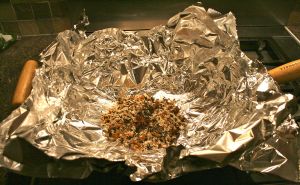
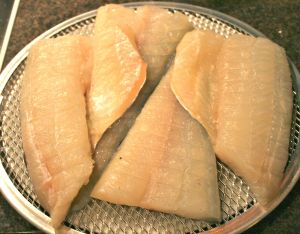

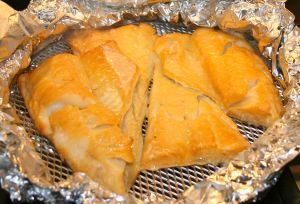


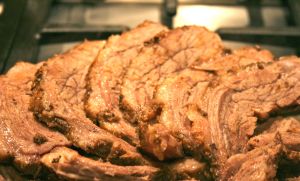
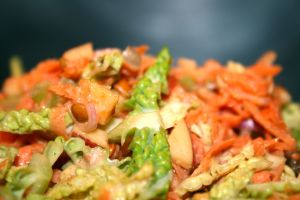
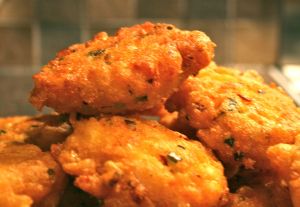

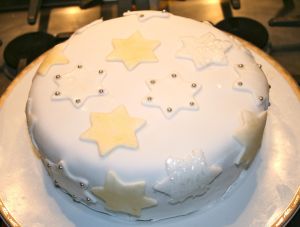

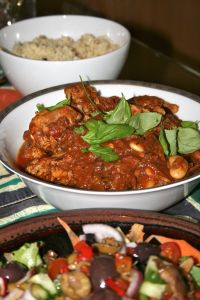


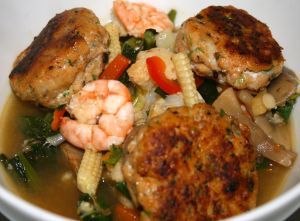

You must be logged in to post a comment.